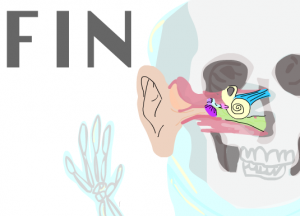Both of my ideas revolve around trying to get a piece of music to play
Idea 1:
You are looking at the inside of an iPod and the goal is to move the signal through it’s different states from the hardrive to the speakers by clicking on the correct component to next move to. I was thinking of doing this in a monochromatic green color.
http://electronics.howstuffworks.com/ipod-hack1.htm

Idea 2:
There is an image of a man sitting at a desk with three things in front of him : an iPod, a set of speakers, and a pair of headphones. The goal is to allow the character to hear the sound in his head.
Spoiler – turn on iPod, music plays and you see the vibrations from the speakers moving towards his head, guide the sound vibrations through the ear canals, to the eardrums, past the three ear bones, into the coclea and finally through the auditory channel where you’ll see the sound get converted into an electrical signal he can understand (might make this piece into a puzzle as well). You will have to correctly tune the frequencies of the ear bones to allow the sound to pass this state. If you turn the music up too loudly the hair cells in the coclea will die and the man will go deaf. You then have to figure out a way to still allow him to hear the sound in this state. Spoiler 2 – through bone conduction – take apart head phones and put vibrating piece right above ear and follow the same path starting from the ear drum.
Visuals will probably be negative until the user is able to get the sound to play then it’ll move to color.
Source: http://www.dangerousdecibels.org/virtualexhibit/2howdowehearb.html
http://www.dangerousdecibels.org/virtualexhibit/2howdowehear.html






